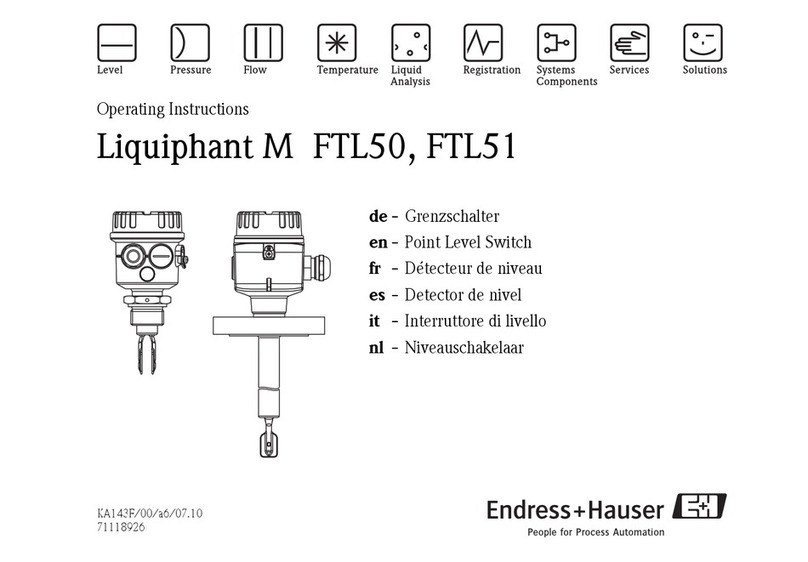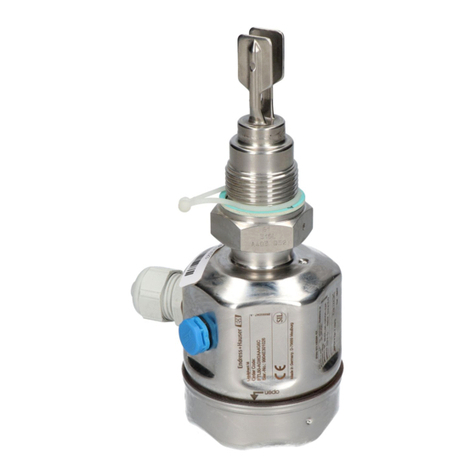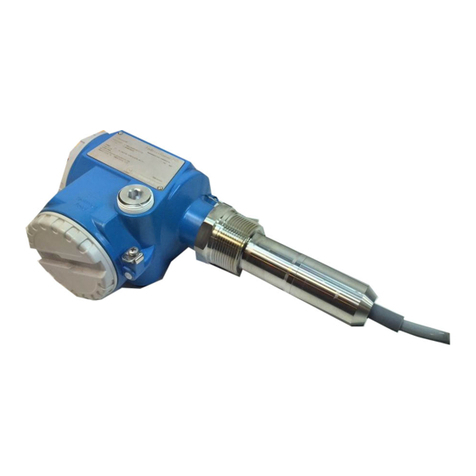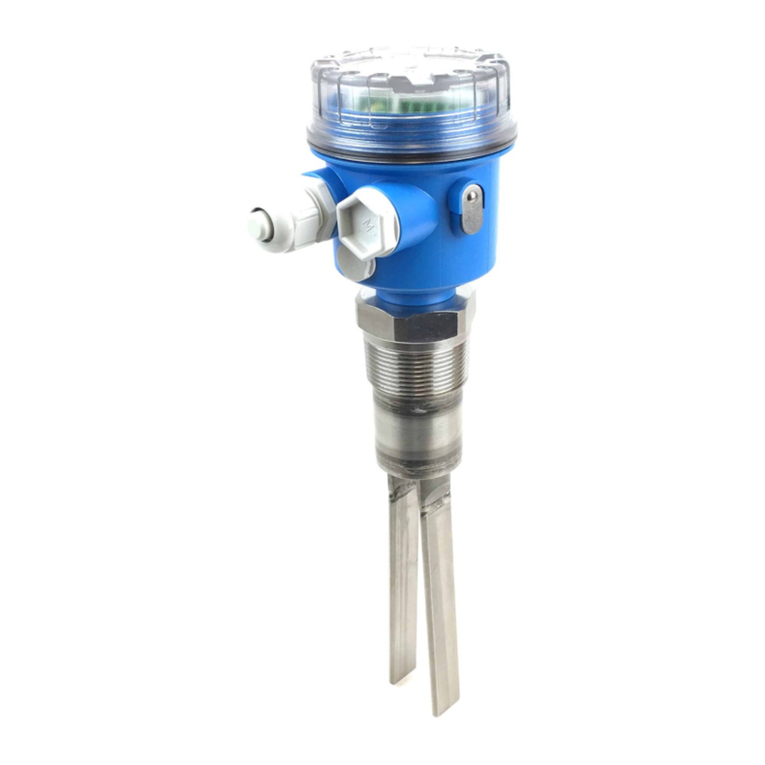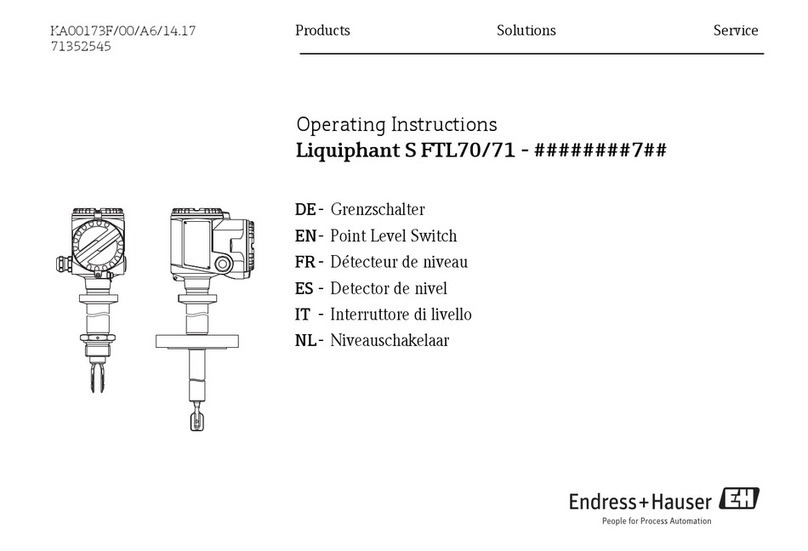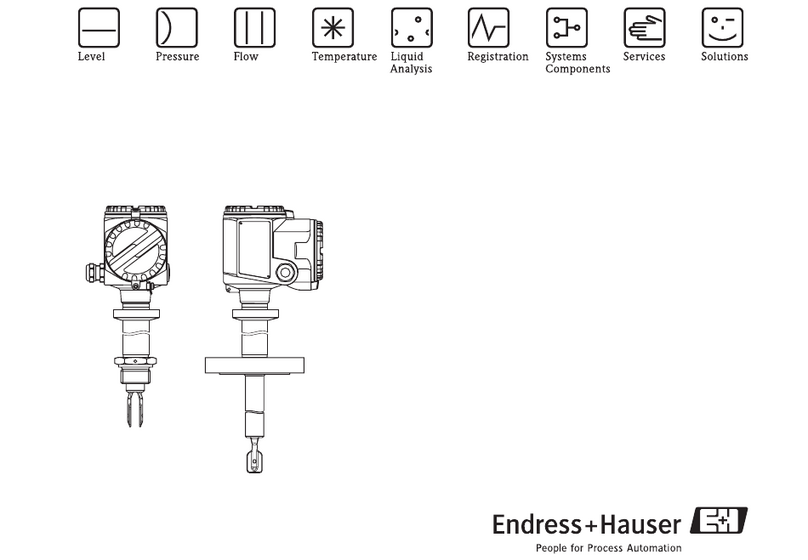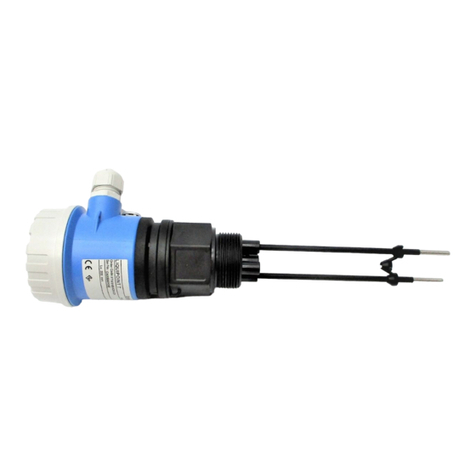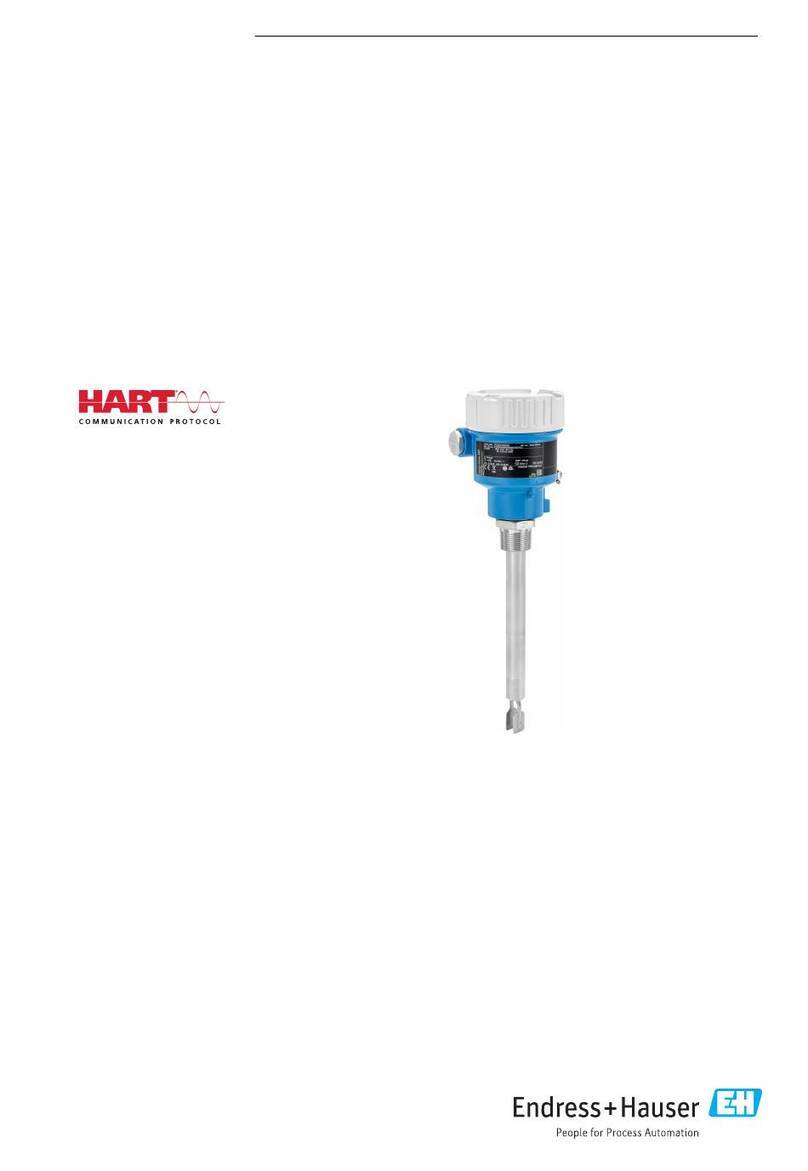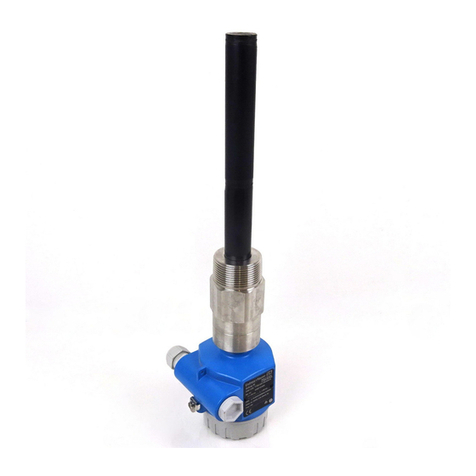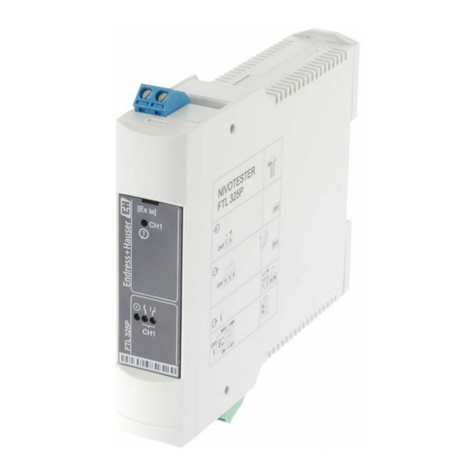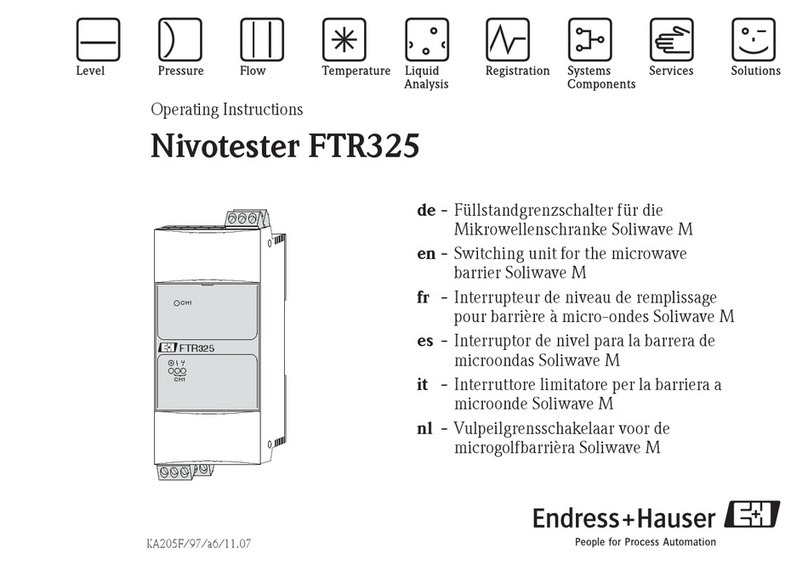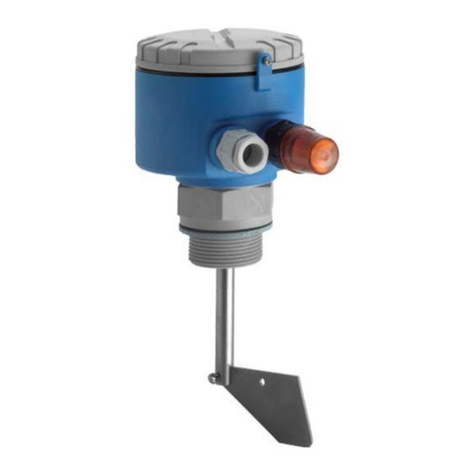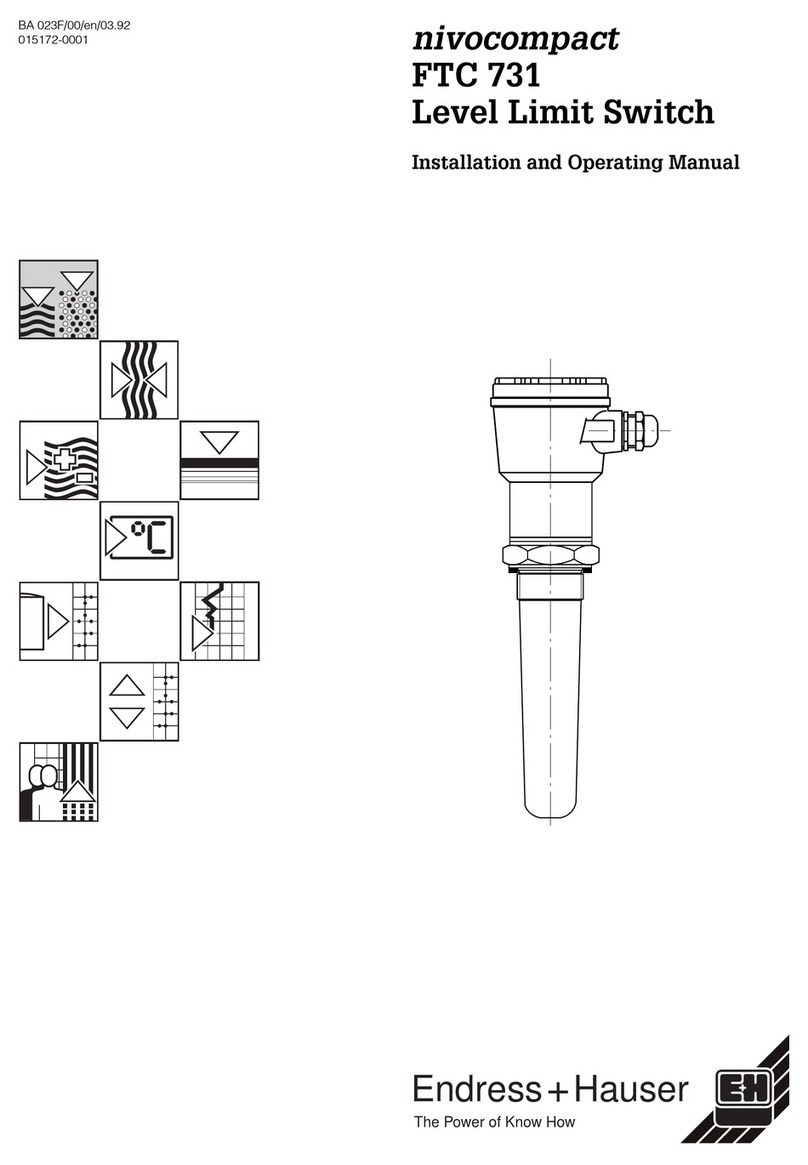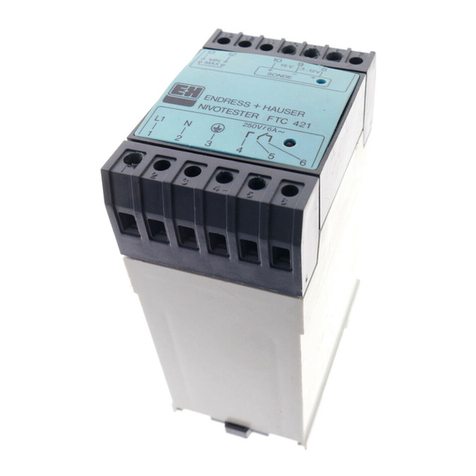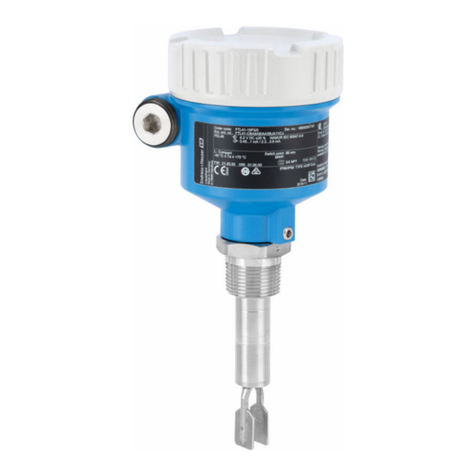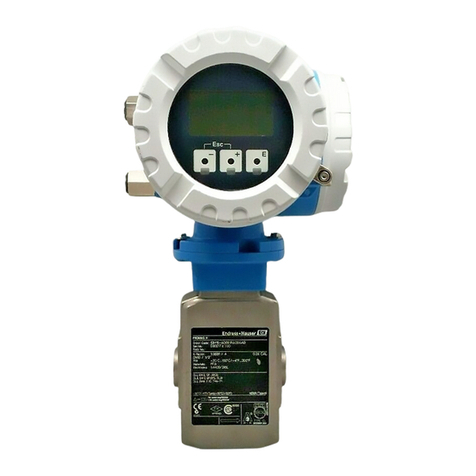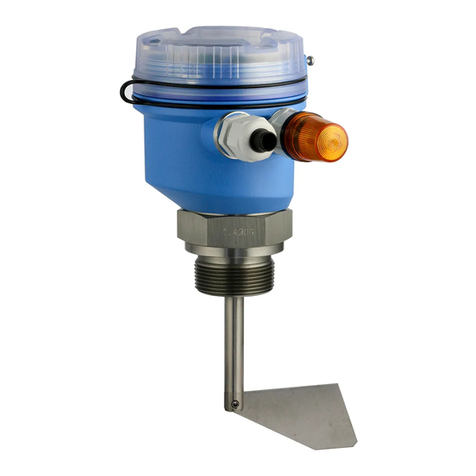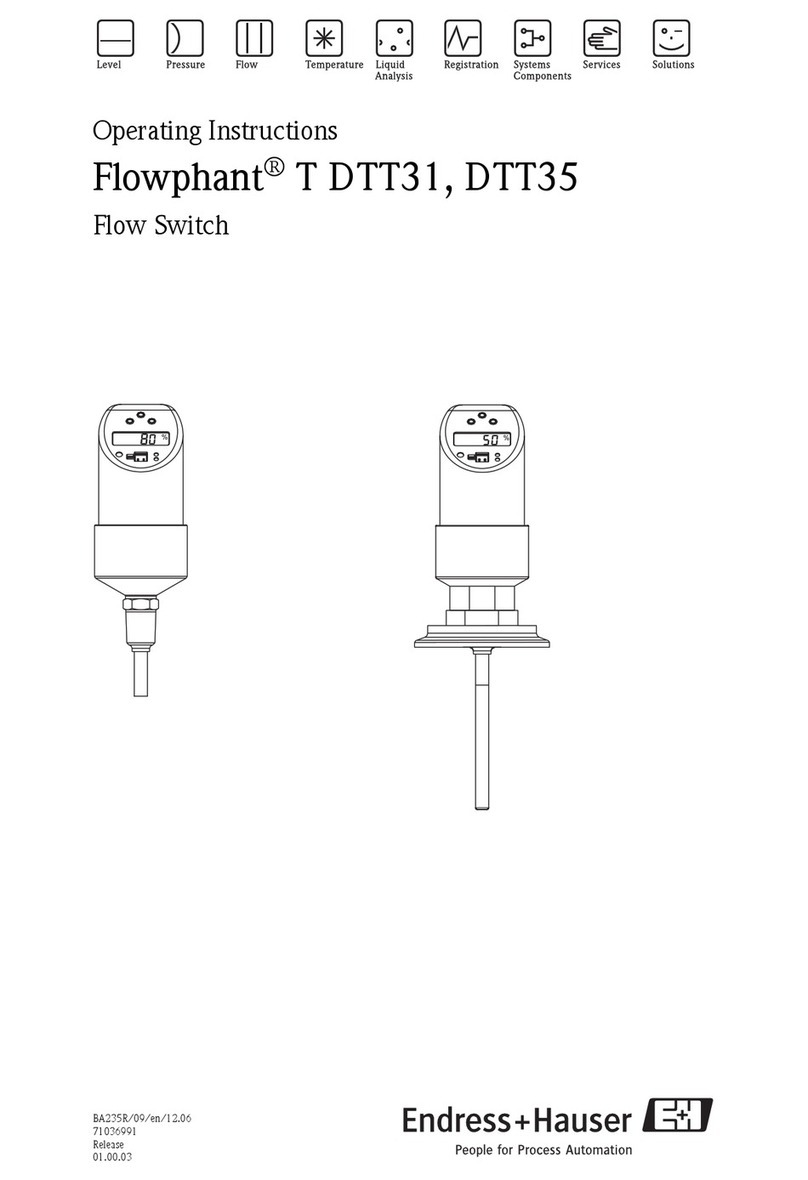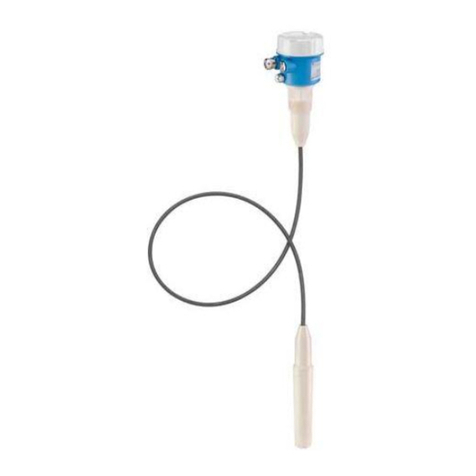
Liquiphant FTL51B Table of contents
Endress+Hauser 3
Table of contents
1 About this document ................ 5
1.1 Symbols used ......................... 5
1.1.1 Safety symbols .................. 5
1.1.2 Electrical symbols ................ 5
1.1.3 Communication specific symbols ..... 5
1.1.4 Symbols for certain types of
information .................... 5
1.1.5 Symbols in graphics ............... 6
2 Basic safety instructions ............ 7
2.1 Requirements for the personnel ............ 7
2.2 Designated use ........................ 7
2.2.1 Incorrect use .................... 7
2.3 Workplace safety ....................... 7
2.4 Operational safety ...................... 7
2.5 Product safety ......................... 8
2.6 IT security ............................ 8
3 Product description ................. 9
3.1 Product design ........................ 9
4 Incoming acceptance and product
identification ..................... 10
4.1 Incoming acceptance ................... 10
4.2 Product identification ................... 10
4.2.1 Nameplate .................... 10
4.2.2 Manufacturer address ............ 10
4.3 Storage and transport .................. 11
4.3.1 Storage conditions ............... 11
4.3.2 Handling of the device ............ 11
5 Installation ....................... 12
5.1 Installation conditions .................. 12
5.1.1 Switch point ................... 12
5.1.2 Take viscosity into consideration .... 12
5.1.3 Avoid buildup .................. 13
5.1.4 Take clearance into consideration ... 14
5.1.5 Support the device ............... 14
5.1.6 Leakage hole ................... 14
5.2 Mounting the measuring device ........... 15
5.2.1 Required tools .................. 15
5.2.2 Installation .................... 15
5.3 Sliding sleeves ....................... 17
5.4 Post-installation check .................. 17
6 Electrical connection .............. 18
6.1 Connection conditions .................. 18
6.1.1 PE connection .................. 19
6.2 Connecting the measuring device .......... 19
6.2.1 2-wire AC (electronic insert
FEL61) ....................... 19
6.2.2 3-wire DC-PNP (electronic insert
FEL62) ....................... 22
6.2.3 Universal current connection with
relay output (electronic insert
FEL64) ....................... 24
6.2.4 DC connection, relay output
(electronic insert FEL64 DC) ....... 26
6.2.5 PFM output (electronic insert
FEL67) ....................... 28
6.2.6 2-wire NAMUR > 2.2 mA/< 1.0 mA
(electronic insert FEL68) .......... 31
6.2.7 2-wire density (electronic insert
FEL60D) for density measurement ... 32
6.2.8 LED module ................... 35
6.2.9 Bluetooth module ............... 35
6.2.10 Relay output ................... 36
6.2.11 Cable entry .................... 36
6.3 Special connection instructions ........... 36
6.4 Hardware settings ..................... 36
6.5 Ensuring the degree of protection ......... 36
6.6 Post-connection check .................. 36
7 Operation options ................. 37
7.1 Overview of operation options ............ 37
7.1.1 Operating concept .............. 37
7.1.2 Operation at electronic insert ....... 37
7.1.3 Diagnostics and verification with
Bluetooth® wireless technology ..... 40
7.2 LED module (optional) .................. 40
7.2.1 LED indicator .................. 41
8 Commissioning .................... 41
8.1 Function check ....................... 41
8.2 Switching on the measuring device ......... 41
8.3 Configuring the measuring device ......... 41
8.3.1 SmartBlue (app) ................ 41
8.4 Advanced settings ..................... 42
8.5 Configuration management .............. 42
8.6 Simulation .......................... 42
8.6.1 Functional test of the electronic
switch with a test magnet ......... 42
8.6.2 Functional test using the button on
the electronic insert .............. 43
8.7 Protecting settings from unauthorized
access .............................. 44
8.8 Bluetooth parameters for Heartbeat ........ 44
8.9 Verification wizard for proof testing ........ 44
9 Operation ......................... 45
9.1 Overview of the diagnostics menu ......... 45
10 Diagnostics and troubleshooting ... 46
10.1 General troubleshooting ................ 46
